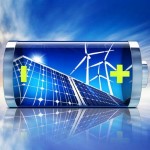Senate Bill 243, a Wake-up Call for Hawaii’s Clean Energy Ambitions
previous published in ililani media
- The Biden administration plans to decarbonize the U.S. power sector by 2035.
- Hawaii plans to decarbonize its electric grid by 2045.
The Hawaii Legislature proposes to tax rather than to ban fossil fuel, as this will send a message to the marketplace, rather than imposing sustainability on the out-of-control fossil fuel industry.
The fossil fuel industry got us into this mess, and by being taxed, they will find solutions to get us out of this mess. So, the theory goes. Just like tobacco which then discovered flavored stuff.
Hawaii proposes using a crystal ball to develop strategic plans to reach future goals.
Imagine the pre-internet, pre-cell phone world from 25 years ago.
Imagine having a crystal ball in 1995 and being asked to map out what 2020 would look like.
Imagine being paid to do this. That is, having the taxpayers fund your analysis.
Fast forward to the new, exciting, cutting edge, energy revolution.
Solar and wind are now the cheapest forms of electricity for virtually everyone on the planet. Energy storage on a large scale has just begun and is poised to take-off.
The electric grid has become a dynamic, two-way, flow of real and reactive power, and communications, with smart devices installed throughout.
The simple world of yesterday`s electricity generation and distribution is becoming vastly complex. New regulatory mechanisms like incentive regulation are being implemented.
Imagine being paid to determine what the world would look like in 2045.

Paid by taxpayers – Hawaii Senate Bill 243 was signed onto by over half of the Senators.
“The legislature finds that section 269-92, Hawaii Revised Statutes, requires each utility company that sells electricity for consumption in this State to establish a renewable energy portfolio standard of one hundred per cent of its net electricity sales by December 31, 2045.”
“The legislature also finds that section 225P-5, Hawaii Revised Statutes, establishes a zero emissions clean economy target to sequester more atmospheric carbon and greenhouse gases than emitted within the State as quickly as practicable, but no later than 2045.”
“The legislature finds that no strategic plan currently exists for the attainment of either of these goals.”
“The Hawaii state energy office … shall establish a strategic plan.”
The problem is pesky community people who pushed for these laws to be passed in the first place and who also care about equity, respect, community values, and participatory democracy.
The goal of the strategic plan is to “provide clarity for utilities, utility-scale developers, and energy distributors in planning to achieve the benchmarks.”
Two different groups would be funded by Legislators to study this impossible analysis of the future.
The University of Hawaii, Mānoa`s Hawaii Natural Energy Institute of the University of Hawaii “shall conduct a feasibility study on the State’s ability to achieve its goal.”
The Hawaii State Energy Office “shall submit its strategic plan, including proposed strategies, benchmarks, and metrics.”
Both studies would be paid for by taxpayers.
The Hawaiian Electric Companies and the Hawaii Public Utilities Commission already tried this.
The Power Supply Improvement Plans (PSIPs) were developed from 2013-16 and are already out-of-date.
Long-term utility planning used to examine scenarios 15-20 years in the future. Today, that has shrunk to five years.
The dynamic electricity sector is changing too fast for longer-term analysis.




Leave a Reply
Join the Community discussion now - your email address will not be published, remains secure and confidential. Mahalo.